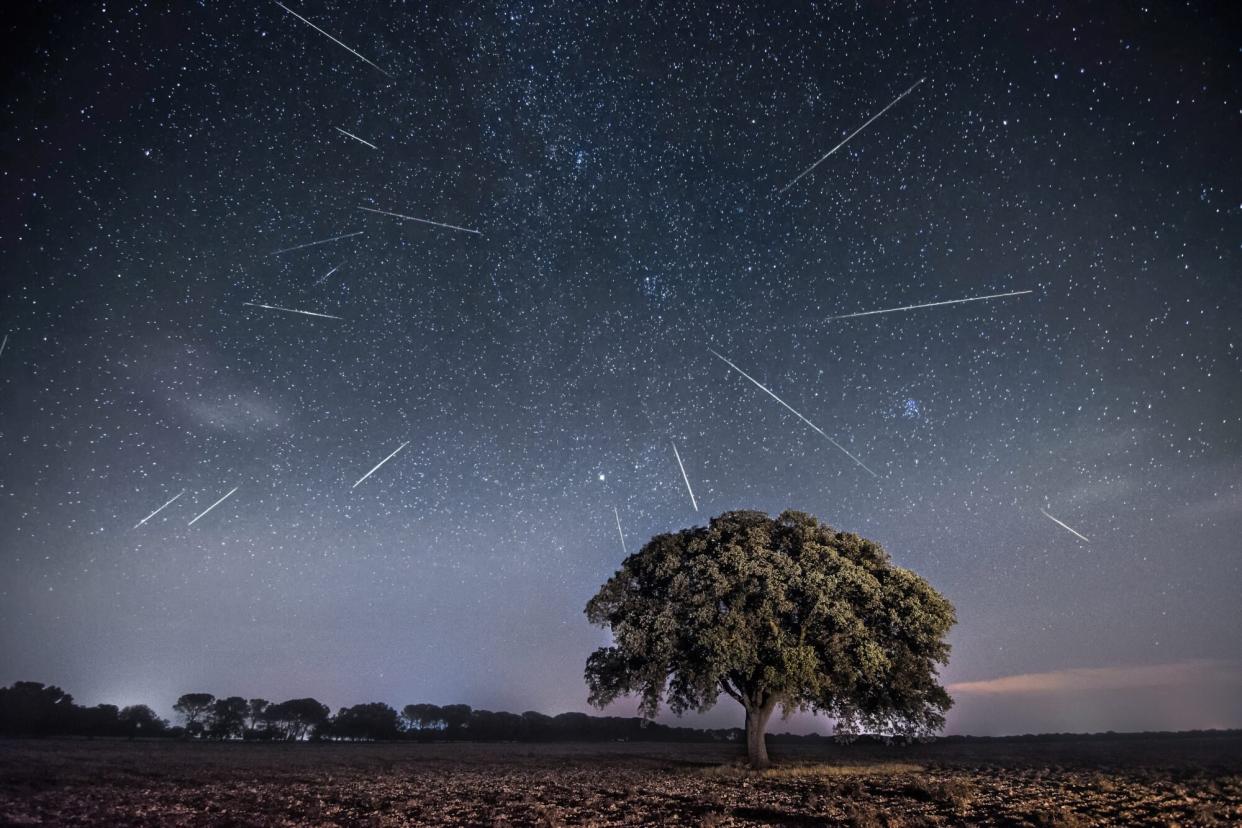3 Meteor Showers Will Converge This Weekend, Creating a Firework Display of Shooting Stars

Getty / Gabriel Gonzalez (noctografia) / 500px
Look into the night sky this weekend and see something truly incredible—three converging meteor showers. The combining force of the Delta Aquarids, Perseids, and the alpha Capricornids will create a firework display of shooting stars that will peak on the evening of Saturday, July 30, and last through the early hours of Sunday.
Delta Aquarids will be the dominant shower in the sky this weekend. The show is slated to reach its peak on July 29 with the highest stars occurring around 2 a.m, EarthSky.org reports. At its height, about 10 to 20 shooting stars per hour are expected to occur, and the waxing crescent moon will keep the sky dimly lit, meaning the stars will be easier to see. But if you don't catch the shower in the next few days, you haven't missed it entirely—the celestial event will continue until late August.
The famous Perseid meteor shower will fly at the same time as the Delta Aquarids, reaching its peak night on August 12 and 13. The Perseids typically put on the best show for those stargazing on the Northern Hemisphere, but this year its height coincides with a full moon, meaning that the shooting stars will be difficult to spot. Instead, it's recommended to view them in convergence with the Delta Aquarids peak this weekend.
Identifying the difference between the two showers depends on where you're watching from. If. you're in the Northern Hemisphere and watching around midnight or later, you'll see the Perseids coming from the Northeast or North. The Delta Aquarids can be spotted coming from the South, EarthSky.org reports.
Additionally, the alpha Capricornids shower will reach its peak this weekend on July 30 continuing into July 31. It's a minor shower, so you don't see more than a few shooting stars per hour, Forbes reports, but it will still add its flares to this weekend's celestial firework display. The Capricornids will radiate from the constellation of Capricorn and will come from the southern sky as seen from the Northern Hemisphere.

